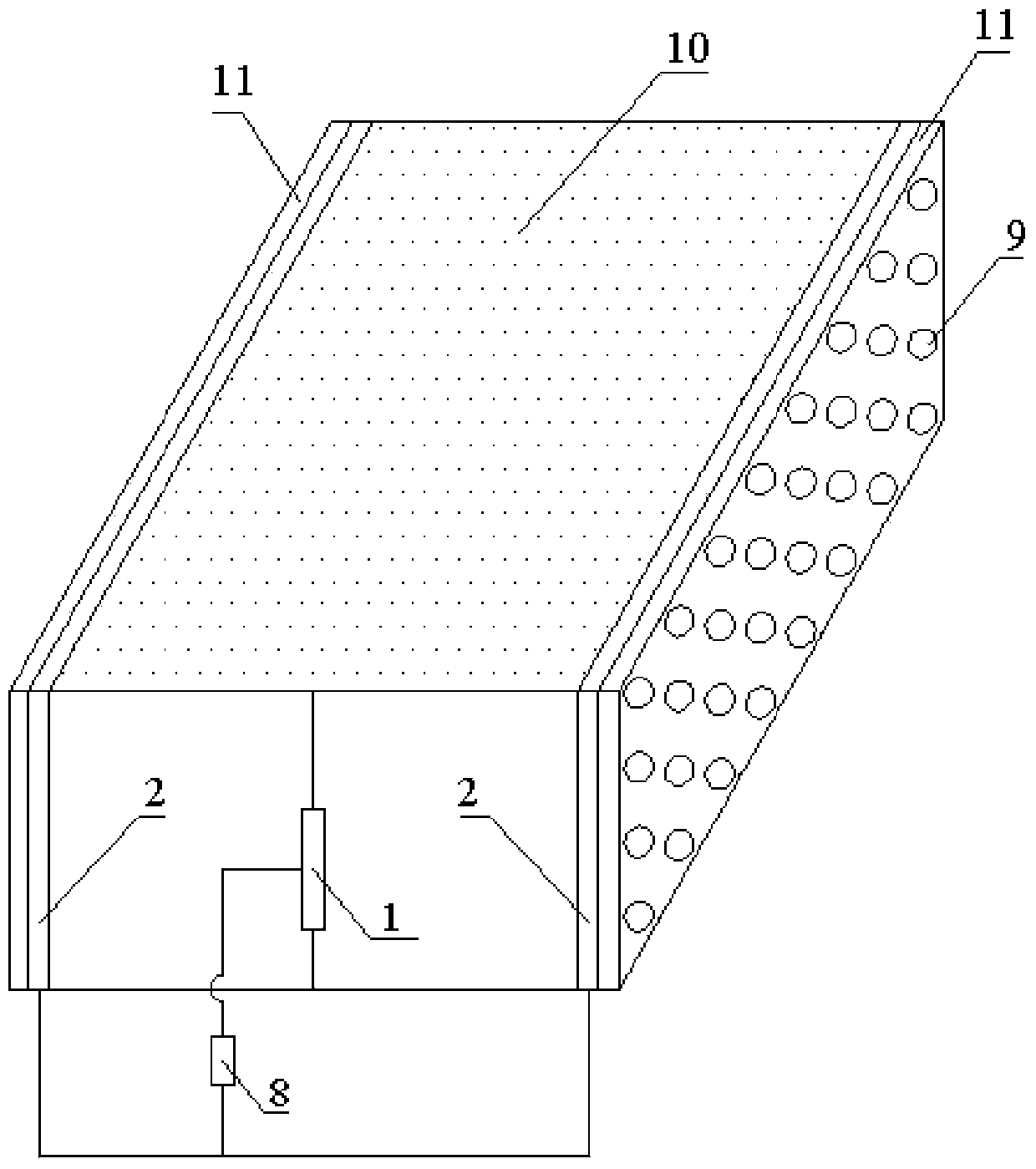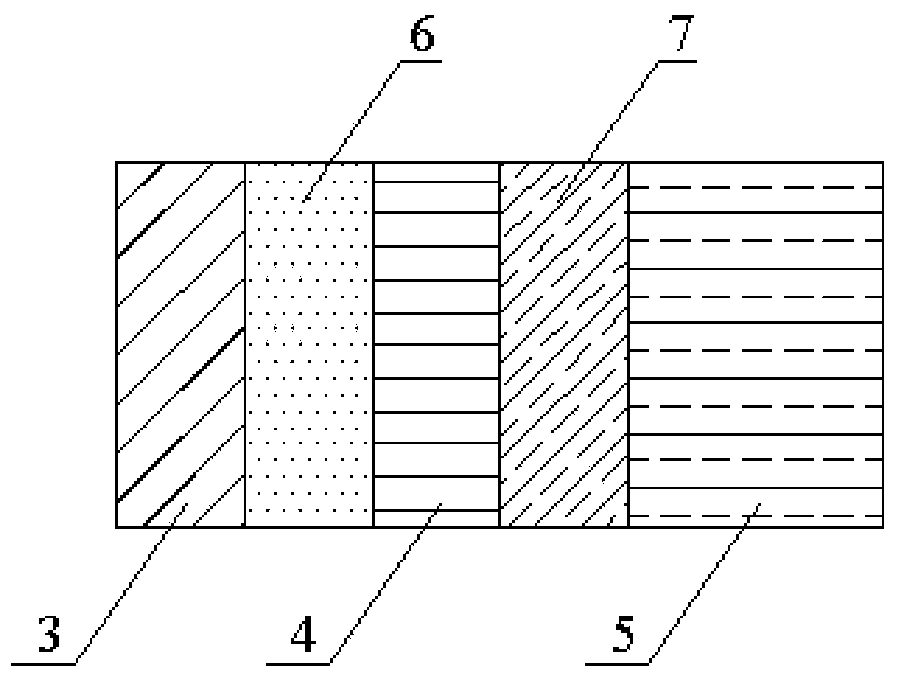Method and device for restoring petroleum-polluted soil through composting by enhancing microbial fuel cells
A fuel cell and oil-polluted technology, applied in the restoration of polluted soil, etc., can solve the problems of long soil remediation cycle, stench, nutritional imbalance, etc., and achieve the effect of shortening the processing time, reducing the processing burden, and reducing the production cost
- Summary
- Abstract
- Description
- Claims
- Application Information
AI Technical Summary
Problems solved by technology
Method used
Image
Examples
Embodiment 1
[0049] The size of the composting device used in this experiment is 2000 mm × 1000 mm × 500 mm. The outer wall is welded with 10 mm thick stainless steel plate. The two side walls are uniformly equipped with round holes with a diameter of 3 mm and the hole spacing is 5 mm. The anode of the microbial fuel cell is made of 5mm thick carbon felt with a size of 1500mm×500mm. Before use, soak it in isopropanol solution for 24 hours, dry it in the air, and then heat it in a programmable oven at 450°C for 30 minutes. Set up according to the attached drawing In the composting device, the lower side of the cathode is 100mm away from the bottom of the composting device, and the upper side of the anode is 200mm away from the soil surface. The cathode of the microbial fuel cell uses 5mm carbon felt with a size of 2000mm×1000m. Vulcan XC-72 conductive carbon black, 60% TPFE, and isopropanol are mixed and evenly spread on the cathode carbon felt according to the mass ratio of 70:42:31 as carb...
Embodiment 2
[0052] The moisture content of the soil not only affects the effect of composting, but also affects the enhanced performance of microbial fuel cells. In order to investigate the impact of different moisture content on the treatment effect of the present invention, design four groups of parallel experiments, three parallel experiments of every group design, test device is identical with example 1, and the soil moisture content after pretreatment is adjusted to 35%, 42%, 49% respectively %, 56%, regularly measure the voltage across the resistor. After 60 days of treatment, the analysis showed that the removal of total petroleum hydrocarbons first increased with the increase of soil water content, and when the water content was greater than 49%, the removal rate tended to be stable. The monitoring results of the voltage across the resistance of the microbial fuel cell show that the output power of the microbial fuel cell increases gradually with the increase of the soil moisture ...
PUM
 Login to View More
Login to View More Abstract
Description
Claims
Application Information
 Login to View More
Login to View More - R&D
- Intellectual Property
- Life Sciences
- Materials
- Tech Scout
- Unparalleled Data Quality
- Higher Quality Content
- 60% Fewer Hallucinations
Browse by: Latest US Patents, China's latest patents, Technical Efficacy Thesaurus, Application Domain, Technology Topic, Popular Technical Reports.
© 2025 PatSnap. All rights reserved.Legal|Privacy policy|Modern Slavery Act Transparency Statement|Sitemap|About US| Contact US: help@patsnap.com


